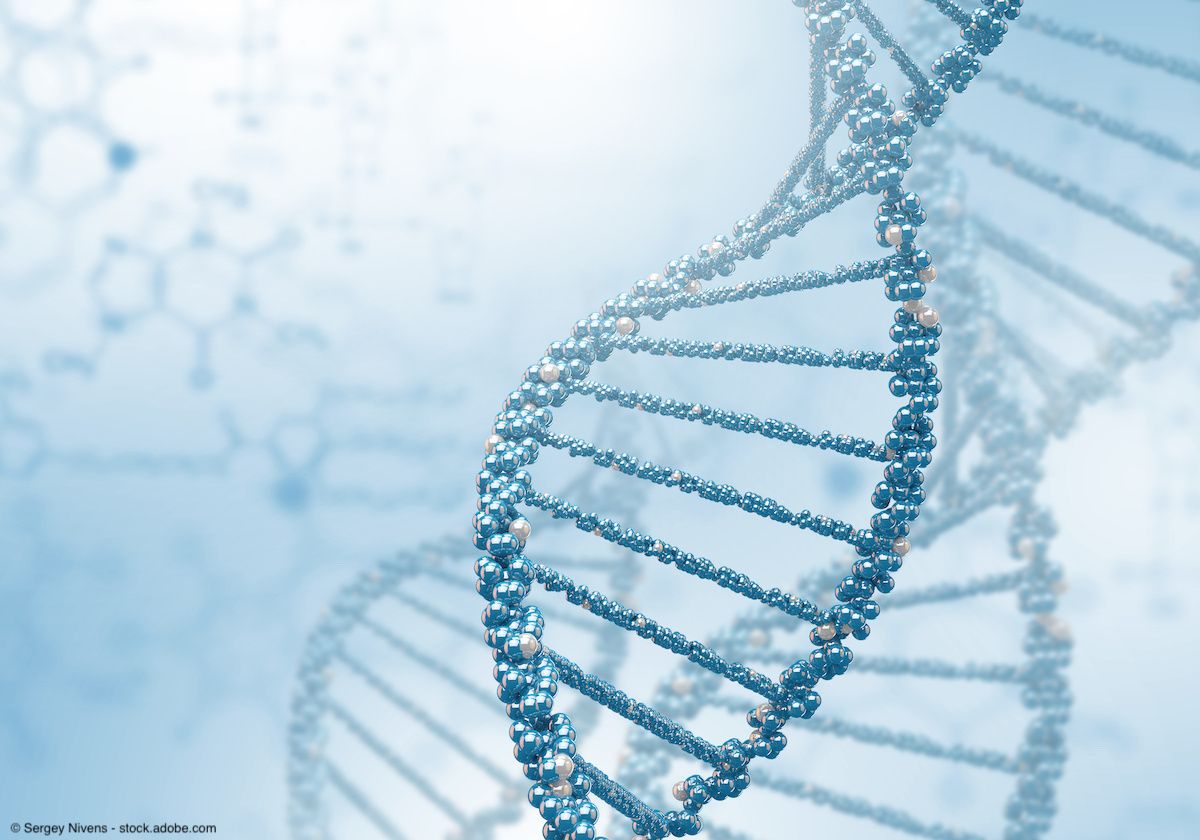News
Article
Niraparib/abiraterone tablet approved in EU for BRCA+ mCRPC
Author(s):
This marks the first worldwide approval for the niraparib/abiraterone dual-action tablet.
The European Commission has approved niraparib (Zejula) combined with abiraterone acetate (Zytiga) in a dual-action tablet (Akeega) plus prednisone or prednisolone for the treatment of patients with metastatic castration-resistant prostate cancer (mCRPC) and BRCA1/2 mutations in whom chemotherapy is not clinically indicated.1
"The dual-action tablet of niraparib with abiraterone acetate is a promising first line targeted treatment option for men with mCRPC and BRCA1/2 mutations," Professor Gerhardt Attard, Oncologist, University College London, stated in a press release.

The approval, which is the first world-wide approval of the tablet, is supported by findings from the phase 3 MAGNITUDE study, which showed that adding the PARP inhibitor niraparib to the antiandrogen agent abiraterone significantly extended radiographic progression-free survival (rPFS) in patients with mCRPC and homologous recombination repair (HRR) gene alterations, such as BRCA1/2.
Data from the MAGNITUDE study presented during the 2022 Genitourinary (GU) Cancers Symposium showed that compared with placebo plus abiraterone, niraparib plus abiraterone led to a 47% reduction in the risk of progression or death in patients with BRCA1/2 mutations and a 27% reduction in the risk of progression or death in all patients with HRR gene alterations.2 The median follow-up time was 18.6 months.
In the BRCA1/2 population, the median rPFS was 16.6 months with niraparib plus abiraterone vs 10.9 months with placebo plus abiraterone (HR, 0.53; 95% CI, 0.36-0.79; P = .0014). The investigator-assessed rPFS was 19.3 months with niraparib/abiraterone and 12.4 months with placebo/abiraterone (HR, 0.50; 95% CI, 0.33-0.75; P = .0006).
“Metastatic castration-resistant prostate cancer remains a lethal disease, with high unmet needs in terms of treatment options, particularly for patients with BRCA1/2 gene mutations,” Professor Gerhardt Attard, Oncologist, University College London, stated in a press release. “We’ve seen that in these patients, niraparib combined with abiraterone acetate and predniso(lo)ne (AAP) significantly reduced the risk of disease progression or death compared to AAP. The dual action tablet of niraparib with abiraterone acetate is a promising first line targeted treatment option for men with mCRPC and BRCA1/2 mutations.”
Overall, the MAGNITUDE study enrolled patients with mCRPC who had received no more than 4 months of prior abiraterone and prednisone for mCRPC; had an ECOG performance status of 0 or 1; and had a Brief Pain Inventory-Short Form worst pain score of 3 or less. Eligible patients were screened for HRR alterations in ATM, BRCA1, BRCA2, BRIP1, CDK12, CHEK2, FANCA, HDAC2, and PALB2. Patients were randomized 1:1 to receive 200 mg of niraparib once daily plus abiraterone or placebo plus abiraterone in each of the cohorts.
Sixty-seven percent (n = 142) of patients in the niraparib arm experienced grade 3/4 AEs vs 46.4% (n = 98) of patients in the placebo arm. The most common grade 3/4 AEs in the niraparib arm were anemia (29.7%; n = 63), hypertension (15.6%; n = 33), and thrombocytopenia and neutropenia (each, 6.6%; n = 14) vs hypertension (14.2%; n = 30), anemia (7.6%; n = 16), and hepatotoxicity (4.7%; n = 10) in the placebo arm.
Updated MAGNITUDE data with an additional 8 months of follow-up were shared at the 2023 GU Cancers Symposium.3 With the additional follow-up, the median radiographic rPFS was 16.7 months in the niraparib group vs 13.7 months in the placebo arm (HR, 0.76; 95% CI, 0.60-0.97; nominal P = .0280). Niraparib also yielded a statistically significant benefit in time to symptomatic progression (TSP) vs placebo, with a hazard ratio of 0.60 (95% CI, 0.42-0.84; P = .0029), as well as in TCC, with a hazard ratio of 0.67 (95% CI, 0.47-0.94; P = .0206).
Among patients with BRCA alterations, the median rPFS was 19.5 months and 10.9 months in the niraparib and placebo arms (HR, 0.55; 95% CI, 0.39-0.78; nominal P = .0007), respectively. TSP progression in the BRCA subgroup was not evaluable (NE) in the niraparib arm vs 23.6 months in the placebo (HR, 0.54; 95% CI, 0.35-0.85; P = .0071). Additionally, the TCC in the BRCA subgroup was NE in the niraparib arm and had a median of 27.3 months in the placebo arm (HR, 0.56; 95% CI, 0.35-0.90; P = .0152), respectively.
“The MAGNITUDE trial was prospectively designed as a precision medicine study to identify the specific population of patients who would most benefit from niraparib with abiraterone acetate plus predniso(lo)ne, and potentially increase the likelihood of treatment success,” Martin Vogel, EMEA Therapeutic Area Lead Oncology, Janssen-Cilag GmbH, stated in a press release. “The results, on which this European Commission approval is based, reinforce the benefit of this niraparib-based combination in effectively addressing BRCA mutations and changing the outlook for patients with mCRPC.”
References
1. Janssen Marks First Approval Worldwide for AKEEGA® (Niraparib and Abiraterone Acetate Dual Action Tablet) with EC Authorisation for the Treatment of Patients with Metastatic Castration Resistant Prostate Cancer with BRCA1/2 Mutations. Published online April 21, 2023. https://bit.ly/3H85Vym
2. Chi KN, Rathkopf DE, Smith MR, et al. Phase 3 MAGNITUDE study: first results of niraparib (NIRA) with abiraterone acetate and prednisone (AAP) as first-line therapy in patients (pts) with metastatic castration-resistant prostate cancer (mCRPC) with and without homologous recombination repair (HRR) gene alterations. J Clin Oncol. 2022;40(suppl 6):12. doi:10.1200/JCO.2022.40.6_suppl.012
3. Efstathiou E, Smith MR, Sandhu S, et al. Niraparib with abiraterone acetate and prednisone in patients with metastatic castration-resistant prostate cancer and homologous recombination repair gene alterations: second interim analysis (IA2) of MAGNITUDE. J Clin Oncol. 2023;41(suppl 6):170. doi:10.1200/JCO.2023.41.6_suppl.170
















